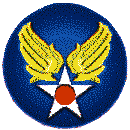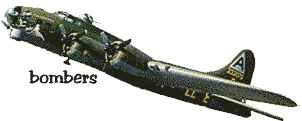 
including aircraft used for cargo, troop transport, weather, and
observation...among other things... |
| |

C 46 |

C 47 HEAR a C-47  |
NOORDUYN UC-64A
"NORSEMAN" 
|
|
The UC-64A is a ten-place, single-engine utility transport manufactured by the Noorduyn
Avaition, Ltd., Montreal, Canada. First flown in 1935, the Norseman was designed for
rugged Canadian bush country operations and could be equipped with wheels, floats, or
skis. Before WW II, 69 were delivered to the Royal Canadian Air Force as trainers. After
service testing seven YC-64s, the U.S. Army Air Forces adopted the aircraft in 1942 as a
light transport. Noorduyn produced 762 Norseman for the USAAF before the war ended. Of
these, 749 were UC-64As, including three that went to the Navy as JA-1s and six that were
equipped with floats for the U.S. Army Corps of Engineers. The last Norseman was produced
in late 1959. Designed for and used in arctic areas, the Norseman also was employed in Europe and the
Pacific as well as in the U.S. during the war. On Dec. 15, 1944, a UC-64A disappeared on a
flight from England to France with bandleader Major Glenn Miller on board. The aircraft
was never found. The Norseman on display was acquired by the Museum in March 1981. It is marked as a
Norseman based in Alaska late in WW II. SPECIFICATIONS
Span: 51 ft. 6 in.
Length: 31 ft. 9 in.
Height: 10 ft. 1 in.
Weight: 7,400 lbs. max.
Armament: None
Engine: One Pratt & Whitney R-1340-AN1 of 600 hp.
Crew: One or two--depending on mission
Cost: $28,000
Serial Number: 44-70296
Displayed as (S/N): 44-70534
PERFORMANCE
Maximum speed: 162 mph.
Cruising speed: 148 mph.
Range: 1,150 miles
Service Ceiling: 17,000 ft. |
| |
CESSNA UC-78B "BOBCAT"
The UC-78 is a military version of the commercial Cessna T-50 light
transport. Cessna first produced the wood and tubular steel, fabric covered T-50 in 1939
for the civilian market. In 1940, the Air Corps ordered them under the designation AT-8 as
multi-engine advanced trainers.
Thirty-three AT-8s were built for the Air Corps, and production continued under the
designation AT-17 reflecting a change in equipment and engine types. In 1942, the AAF
adopted the Bobcat as a light personnal transport and those delivered after January 1,
1943 were designated UC-78s. By the end of WW II, Cessna had produced more than 4,600
Bobcats for the AAF, 67 of which were transferred to the U.S. Navy as JRC-1s. In addition,
822 Bobcats had been produced for the Royal Canadian Air Force as Crane 1s. Dubbed the "Bamboo Bomber" by the pilots who flew them, it was one of the
aircraft featured in the popular television series "Sky King" of the 1940s and
'50s. The UC-78 on display (S/N 42-71626) is one of the 1,806 -Bs built for the AAF. It was
acquired by the Museum in 1982. SPECIFICATIONS
Span: 41 ft. 11 in.
Length: 32 ft. 9 in.
Height: 9 ft. 11 in.
Weight: 5,700 lbs. max.
Armament: None
Engines: Two Jacobs R-755-9s of 245 hp. each
Cost: $31,000
Serial Number: 42-71626
C/N: 4322
Other Registrations: N43BB, N4403N PERFORMANCE
Maximum speed: 175 mph.
Cruising speed: 150 mph.
Range: 750 miles
Service Ceiling: 15,000 ft.
This aircraft is awaiting restoration |
| |
TAYLORCRAFT L-2M
"GRASSHOPPER" 
The L-2, adapted from Taylorcraft's pre-war commercial Model Tandem
Trainer, was initially designated the O-57 at the time it was first ordered by the Air
Corps. The airplane was given its service tests in the summer of 1941 during maneuvers in
Louisiana and Texas where it was used for various support purposes such as a light
transport and courier.
At the time American ground forces went into combat around the world during WW II, the
AAF began using the L-2 in much the same manner as the observation balloon was used in
France during WW I--spotting enemy troop and supply concentrations and directing artillery
fire on them. It was also used for other types of liaison and transport duties and
short-range reconnaissance which required airplanes that could land and take off in
minimum distances from unprepared landing strips. The L-2 on display was donated by Staff Sergeant Nelson K. Corbin of Memphis,
Tennessee, in May 1964. SPECIFICATIONS
Span: 36 ft.
Length: 22 ft. 9 in.
Height: 6 ft. 8 in.
Weight: 1,325 lbs. loaded
Armament: None
Engine: Continental O-170-3 of 65 hp.
Displayed as (S/N): 42-26753
PERFORMANCE
Maximum speed: 92 mph.
Cruising speed: 83 mph.
Range: 227 miles
Service Ceiling: 12,000 ft. |
| |
STINSON L-5 "SENTINEL"
The L-5 was the military version of the commercial Stinson 105 Voyager. Six Voyagers
were purchased by the AAF in 1941 as YO-54s for testing, and quantity orders for Sentinels
began in 1942, first as O-62s before the designation was changed to "L" for
liaison in April 1942. Between 1942-5, the AAF ordered 3,590 L-5s, making it the second
most widely used AAF liaison aircraft. The unarmed L-5 with its short field takeoff and
landing capability was used for reconnaissance, removing litter patients from front line
areas, delivering supplies to isolated units, laying communications wire, spotting enemy
targets for attack aircraft, transporting personnel, rescuing Allied personnel in remote
areas and even as a light bomber. In Asia and the Pacific, L-5s remained in service with
USAF units as late as 1955. The L-5 on display was donated by Dr. Robert R. Kundel of Rice Lake, Wis. and was
restored by the "Oriole Club" 133rd Tactical Airlift Wing, Minnesota ANG. It is
marked and painted as an L-5 of the 25th Liaison Sq. serving in New Guinea in 1944. It was
delivered to the Museum in 1977. SPECIFICATIONS
Span: 34 ft. 0 in.
Length: 24 ft. 1 in.
Height: 8 ft. 11 1/2 in.
Weight: 2,050 lbs. max.
Armament: None
Engine: Lycoming O-435-1 of 190 hp.
Cost: $10,000
Displayed as: 42-98667
PERFORMANCE
Maximum speed: 130 mph.
Cruising speed: 90 mph.
Range: 360 miles
Service Ceiling: 15,600 ft.
BEECH AT-11
"KANSAN"
The AT-11 was the standard WW II bombing trainer; about 90 percent of the more than
45,000 AAF bombardiers trained in AT-11s. Like the C-45 transport and the AT-7 navigation
trainer, the Kansan was a military version of the Beechcraft Model 18 commercial transport. Modifications included a transparent
nose, a bomb bay, internal bomb racks, and provisions for flexible guns for gunnery
training. commercial transport. Modifications included a transparent
nose, a bomb bay, internal bomb racks, and provisions for flexible guns for gunnery
training.
Student bombardiers normally dropped 100-lb. sand-filled practice bombs. In 1943, the
AAF established a minimum proficiency standard of 22 percent hits on target for trainees.
Combat training missions were flown taking continuous evasive action within a ten-mile
radius of the target and final target approaches had to be straight and level and no
longer than 60 seconds. After September 30, 1943, these missions were generally flown
using the Norden Bombsight and the C-1 automatic pilot, the aircraft being guided by the
bombardier student during the bombing run.
The AT-11 on display is one of 1,582 ordered by the AAF between 1941 and 1945, 36 of
which were modified as AT-11A navigation trainers. It was donated to the Museum by the
Abrams Aerial Survey Corp., Lansing Michigan, in 1969 and is painted to represent a
trainer in service during the autumn of 1943.
SPECIFICATIONS
Span: 47 ft. 7 3/4 in.
Length: 34 ft. 1 7/8 in.
Height: 9 ft. 7 3/4 in.
Weight: 9,300 lbs. maximum
Armament: Two .30-cal. machine guns when used as a gunnery trainer
Engine: Two Pratt & Whitney R-985 of 450 hp. each
Cost: $67,000 PERFORMANCE
Maximum speed: 215 mph.
Cruising speed: 150 mph.
Range: 745 miles
Service Ceiling: 20,000 ft.
  

back to 
home | arcade | gallery | video | records | resources | interact| shop | wings across america
|
|
|